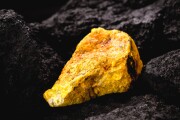Academia
-
Researchers are studying how excessive groundwater extraction is causing global and regional aquifer depletion and land subsidence.
-
Researchers have developed a low-cost carbon capture technology called PICC that uses only water and pressure to remove nearly all CO2 from industrial exhaust, offering a simpler, cleaner, and more affordable alternative to traditional chemical methods.
-
Allison Taylor, SPE, is studying whether nanogels can improve how gas, specifically CO2, is stored underground during CO2 flooding operations.
-
PE Ltd.'s software will allow students and faculty to work directly with modeling technologies and build real-world, job-ready skills.
-
The newly renovated facility is named in honor of Randy J. Cleveland, SPE, who had a 35-year career with ExxonMobil before retiring in 2019.
-
The new facility was designed to enable advances in understanding subsurface processes through integrated geomechanics, fluid dynamics, and advanced reservoir characterization.
-
The 1-month project, led by UT Austin's Estibalitz Ukar, will pump CO2-rich water into a 400-m-deep well to test if magnesium-rich rocks at the test site can capture CO2 by turning it into stable minerals.
-
After a decade of research, the project boasts several achievements including drilling two test wells at depths below 9,800 ft, detailed geologic modeling and reservoir characterization, and multiple publications.
-
University of Colorado Boulder researchers will combine tools, such as power systems modeling, spatial statistics, and GIS mapping along with community forums, surveys, and interviews to capture both the human and technical sides of geothermal development.
-
The new facility is named in honor of Autry C. Stephens, UT alumnus, who founded Endeavor Energy Resources.
Page 1 of 20
Trending Content
















